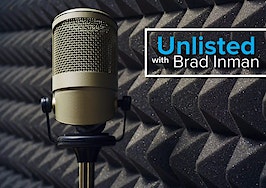- According to the report, markets with higher offender indexes tend to have lower home values and equity.
- The average median sales price last year for homes in very low offender ZIP codes was three times higher than homes in very high ZIP codes -- $450,925 versus $126,205.
- Home price appreciation, or HPA, is actually stronger on a one-year and five-year scale in ZIP codes with a higher offender index than the safer ZIP codes in the country.
- RealtyTrac also found ZIP codes with a very high offender index were 61 percent higher in foreclosure rates than ZJIP codes with a very low index.
Learning your ZIP code is prone to registered criminal offenders is concerning, to say the least, and the home value risks may be equally upsetting.
Fortunately for New York residents, 61 percent of homes in New York ZIP codes have a very low offender index on RealtyTrac’s new Registered Criminal Offender Index.
High offender indexes = lower value and equity
According to the report, markets with higher offender indexes tend to have lower home values and equity. The average home value for the first quarter of 2016 in ZIP codes with a very low offender index was more than three times higher than homes in ZIP codes with a very high offender index.
In the very low offender ZIP codes, including many in New York, the average home values were $512,841 versus $157,844 in the very high offender ZIP codes.
The average median sales price last year for homes in very low offender ZIP codes was also three times higher than homes in very high ZIP codes — $450,925 versus $126,205. Homeowners in ZIP codes with a very low offender index also had 29 percent equity — three times the average 10 percent equity for homeowners in the very high ZIP codes.
“If you consider your home a way to invest and build wealth, those folks in the very low category have done a lot better in terms of building wealth than those in the very high,” said Daren Blomquist, vice president of RealtyTrac.
[graphiq id=”g46NPQoOSvr” title=”Home Equity Statistics in New York City, NY” width=”600″ height=”615″ url=”https://w.graphiq.com/w/g46NPQoOSvr” link=”http://places.findthehome.com/l/71121/New-York-City-NY” link_text=”Home Equity Statistics in New York City, NY | FindTheHome”]
Home price appreciation fluctuates depending on index
A high number of criminals renting or owning in your neighborhood isn’t the only thing affecting home values: home price appreciation, both short and long-term, fluctuates depending on the offender index. However, the ways in which appreciation varies may surprise you.
Home price appreciation, or HPA, is actually stronger on a one-year and five-year scale in ZIP codes with a higher offender index than the safer ZIP codes in the country. RealtyTrac data illustrates that one-year HPA is greater in areas with 7 percent appreciation in very high ZIP codes, compared to 5 percent HPA in very low criminal ZIP codes.
Also, five-year HPA is up 24 percent on average in very high-offender ZIP codes, versus 20 percent in very low ZIP codes.
But long-term, 10-year appreciation is strongest in markets with lower criminal density, the report says. Home values in very low markets, including New York City, grew 7 percent over the last decade, whereas homes in high and very high markets stayed flat. ZIP codes under the medium category dropped 2 percent in value over the last 10 years.
“When you look at those home equity numbers and the 10-year appreciation, it’s more evident in those numbers that, over time, those markets with the high density of offenders are not holding their value as well and have not recovered as well from the downturn,” Blomquist said.
“Those tend to be markets that are more volatile, that were hit hardest. They lost their value the quickest during the downturn and have the farthest to bounce back.”
Offender index, foreclosure rates and HomeDisclosure.com
RealtyTrac also found ZIP codes with a very high offender index were 61 percent higher in foreclosure rates than ZIP codes with a very low index.
The lowest increase in annual foreclosure activity last year was in ZIP codes with a low offender index at 12 percent, followed by a medium offender index at 13 percent. Foreclosure activity increased 18 percent in very low offender ZIP codes and 22 percent in high offender ZIP codes. In very high-offender ZIP codes, foreclosure activity increased 31 percent in 2015.
Statewide, New York foreclosures increased 15.5 percent year-over-year in February, with a total of 5,171 filings.
HomeDisclosure.com, a RealtyTrac subsidiary powering the criminal offender data, reveals registered criminals within a half-mile radius of homes. Criminal density data is intended to help buyers vet out potential properties, and with the latest index, potentially avoid an adverse investment.
Along with home equity, criminal offender location is one of the top two researched topics on HomeDisclosure.com. It’s no. 1 with the most unique visitors, according to Mike Sawtell of consumer solutions at RealtyTrac.
What it means for NYC
Ensuring safety and securing your home’s value are two highly important aspects of purchasing a home, indeed. NYC metro residents benefit from 27 percent home equity averages compared to a nationwide home equity of 20 percent, but whether or not this is a cause-effect relationship to criminal housing is unknown.
NYC is synonymous with high home prices, and criminals in and out of the justice system may not be able to budget the high cost of living and whether they choose to rent or own, continuing the overall trend.
“If you just look at the value in a vacuum, it becomes a bit of a chicken-and-the-egg thing, in that the fact that values are lower in ZIP codes with a higher density of offenders. It may just be because that’s where the offenders can afford,” Blomquist said.
However, the strong correlation between less offenders, decreased foreclosure activity, higher home values and long-term HPA is striking, Blomquist says.
“It’s at least in part reflective that NYC has a high percentage of homes of low density of offender areas. It is lifting up the overall market and homeowners have regained more equity overall than nationwide,” he said.









